2013 Pivot Mach 5.5 Carbon Pro XT/XTR
(discontinued)
| Where To Buy | |||
|---|---|---|---|
Free shipping on orders over $50 (continental U.S. only).
International shipping available. Some exclusions apply. |
|||
Free shipping on orders over $50 (continental U.S. only).
International shipping available. Some exclusions apply. |
|||
Reviewed by Matt Thompson and Jess Pedersen // Written by Brandon Turman // Photos by Shawn Spomer and Brandon Turman
Many of the best things in life take some time to brew. Such is the case with the Mach 5.7 Carbon from Pivot Cycles. After five years of making aluminum only frames, including the Mach 5.7, Pivot released their first ever carbon model in 2012 - the Mach 5.7 Carbon. Why did it take so long? Because the brand doesn't rush things, and they were waiting for (and actively working on) carbon technologies to advance to the point where they could beat the already impressive reliability and strength to weight ratio of their aluminum bikes. Now in its second year of production, the Mach 5.7 Carbon represents that technology breakthrough. Not only is the carbon version a half pound lighter than the aluminum version, but it's also 10% stiffer. Curious how the new bike rode, we invited Pivot to send out the dw-link equipped Mach 5.7 Carbon for a go during our 2013 Test Sessions in Southern Utah.

Mach 5.7 Carbon Highlights
- Full carbon frame
- 26-inch wheels
- 145mm (5.7-inches) of rear wheel travel
- Tapered headtube
- 67.1-degree head angle
- 71.1-degree seat tube angle
- 13.7-inch bottom bracket height
- 16.9-inch chainstays
- 92mm PressFit bottom bracket shell
- 142mm rear spacing with 12mm through axle
- Measured weight (size Large, no pedals): 27 pounds, 10 ounces (12.5kg)
- Frame weight: 5.25 pounds (2.3kg)
- XT/XTR Pro build - $5,899 MSRP complete, $2,599 frame only
The Mach 5.7 Carbon may have been the company's first carbon bike, the design team had a ton of prior experience with the material and it shows. Key to the performance and strength of any carbon frame is the absence of voids and wrinkles, and the Mach 5.7 is as smooth as can be thanks to the use of Pivot's exclusive hollow box, high-compression internal molding technology that allows better compaction of the material.
Changes from the alloy version to carbon are most obvious in the rear end of the bike, where the new material has allowed Pivot to do away with one of two struts connecting the stays, as well as the seat stay bridge. The latter of these two changes addressed a mud clearance issue that was one of the few things people could fault the alloy version with.
The tapered head tube, massive down tube, BB92 PressFit bottom bracket, high-modulus carbon rocker, one-piece rear triangle, 12x142mm axle, 160mm post mount dropouts, widely spaced pivot bearings, and short suspension links all work together to create a frame that's plenty stiff in all the right places.
In addition to a metal plate for dropped chains, custom rubberized leather chainstay, inner seat stay, and down tube guards help protect the carbon investment. Attention to detail and workmanship is obvious as you look around the frame, and it's really a very nice package.
The only glaring absence from the frame are ISCG tabs to mount a chainguide or bash guard. Because it uses a PressFit bottom bracket, you lose the chance to mount one that way, and the clamp-style adapter that's available for the alloy version won't work on the new frame due to clearance issues. That said, there's still the option of running a 1X guide bolted to the direct mount front derailleur bracket. Combined with a clutched derailleur we can't imagine dropped chains would be much of an issue.

Suspension is a dw-link affair, which is a short-link four-bar system known for its position sensitive anti-squat characteristics. The system counteracts weight transfer and drivetrain forces while pedaling, allowing Pivot to use a very light custom tune on the rear FOX CTD Float shock for improved small bump sensitivity. 30% sag is recommended, and it's super easy to set the bike up using a small sag indicator on the rear shock.
Offset pivot bearings make room for the high direct mount front derailleur, while at the same time maintaining wide spacing and double row bearing placement. All together, there are a total of eight bearings in the lower link and four in the upper link, all hiding under CNC'd and anodized hardware. The use of two bearings at each corner of the lower link is said to increase durability and smoothness.
On The Trail
Hurricane, Utah's famous JEM Trail served as a good place to test the bike over some pedally, flowy terrain under Matt, and a JEM to Hurricane Rim excursion was in order for Jess to feel it out over some rockier bits. Jess also piloted the bike down Nephi's Twist, a trail littered with jumps, drops, and big compressions.
With the stock stem and bars in place, cockpit length was very maneuverable, comfortable, centered, and balanced. This allowed the bike to climb without being cramped while maintaining a reasonable length for downhill tech and tight turns. The bar/stem combo was on the narrow and long side for our tastes, but it will suit many riders.
Angles wise, the Mach 5.7 also finds a good balance between climb- and shred-ability. The head angle could benefit from being a touch slacker for the steeps, but the bike still handled descents well and didn't wander one bit on the climbs. Additionally, the 13.7-inch bottom bracket height helped create a ride that cornered very well, was stable, and didn't clip rocks during pedaling.

Downhill performance was flat out FUN (yes, the all caps kind of fun). We found the bike to be very active, lively, and playful, making it easy to change lines quickly and encouraging us to stay involved and move the bike around. The 16.9-inch chainstays felt a little long when going to pull up over a ledge or manualing, but they also added stability to the bike. With a shorter stem and wider bars in place, stability and that playful factor would get even better. Drifts were predictable and cornering was a blast thanks to the stiff rear end.
All 5.7-inches of the dw-link driven suspension worked very well. The bike had a distinct get-up-and-go feel, carried speed very well, and it was easy to feel where in the travel we were at. It seemed to use more travel than most bikes on a consistent basis, but still felt supported throughout, especially in the mid-stroke. It performed excellent over chatter, and was very compliant over small bumps. The first third of the Mach 5.7's travel has a rearward axle path which provides anti-squat while pedaling and also improves small bump and square-edge performance. Large square edges were a little harsh, but for the most part there were no noticeable hangups. As you push through that first third of travel, the axle path becomes more vertical to avoid the negative effects that lengthening chainstays can have, allowing the bike to still respond well in rough pedaling sections.
Jumps, g-outs, and drops were pretty good, but when we were really getting after it we found that the bike was sometimes easy to bottom out. The bike is designed with a progressive-regressive leverage curve, which when combined with an air shock results in a fairly linear feel throughout. If anything, we'd tune the shock to be ever so slightly more supportive near bottom out, but we think the current tune is pretty solid.
In general, the incredibly smooth yet supported action of the rear had us wishing for a more tunable fork to give the bike an even more balanced feel.

At 27.6 pounds, the build had a very respectable weight, especially with the inclusion of a dropper post. It felt light, snappy, easy to move around, firm under out of the saddle efforts, and rolled decently well.
Hard out of the saddle sprints yielded a surprising amount of acceleration given how active the rear end is, even in 'Descend' mode - this is where those strong anti-squat characteristics come into play. The bike is responsive to pedal inputs, a very efficient pedaler, and there's no sense of lost power.We kept the shock wide-open in 'Descend' mode at most times, and while there was a little bob, the bike rolled faster through rough bits and provided more traction.Perhaps the standout feature, the Mach 5.7 does all of this without any fancy levers, pedaling platform on the rear shock, or loss of compliance in the initial stroke. Add in the neutral geometry for climbs and you've got one very proficient climbing machine.
Build Kit
Judging by the build kit, it's pretty obvious that the boys at Pivot ride test their components heavily before spec'ing a bike. Save the stock Kenda Nevegal tires, skinny bar, and slightly long stem, there aren't any parts we'd want to change.

The whole drivetrain ran flawlessly, aided by the XTR rear derailleur's super smooth shifts. It was very quiet for a 2x10 setup, and the absence of chain rub or slap made the bike so quiet the only noises we could identify were cables rattling on the frame near the headtube. We also never lost a chain thanks to the Shadow+ clutch system.
The KS LEV seatpost, which we believe was an add-on for our build, was incredibly smooth, easy to actuate, and the fixed cable routing was a big bonus. Our previous long term test of the KS LEVshowed that the smooth performance is maintained over time with little to no maintenance concerns.
As we mentioned before, the stock Kenda Nevegal tires were perhaps the only thing we could fault the bike with in regards to the spec. We've found them to have a vague transition feeling from straight line to cornering and an unpredictable feel when breaking loose. That said, we swapped them out with some Continental tires for our Test Sessions.
Shimano's XT brakes were awesome, as usual, and provided more than enough power, great modulation, and were consistent during sustained braking. We really appreciated the comfortable, snappy lever feel of Shimano's stoppers as well.
Long Term Durability
When it comes to longevity, everything about the Mach 5.7 Carbon seems to be well put together and easy to service, leaving no doubts in our minds about durability of the bike as a whole.

What's The Bottom Line?
We like the Mach 5.7 Carbon. A lot. It's predictable, stiff, lively, light, and stable - all prerequisites for a fun ride. We felt comfortable on it instantly, and had no trouble charging into sections or sending it when the trail got nasty. The suspension handles nearly everything with grace while still pedaling extremely efficiently, even in the rough bits. The head angle felt a touch steep on the burliest of descents, but the climbing advantages and over other terrain make up for it. With wider bars and a shorter stem than spec'd, we think the bike would be nearly perfect.
This Mach 5.7 Carbon is for the person that likes to ride all sorts of trails, from flowy XC to advanced descents and all-day epics, making it a very versatile weapon and one we'd be happy to have in our garage.
Visit www.pivotcycles.com for more details.
Bonus Gallery: 40 photos of the 2013 Pivot Mach 5.7 Carbon
About The Reviewers
Matt Thompson - Humble enough not to claim his Master's Downhill World Champ status when we asked him what his accomplishments were, Matt has over 20 years on a bike and likes to go fast. Really fast. At 210 pounds of trail building muscle, he can put the hurt on a bike in little to no time.
Jess Pedersen - Jess is one of those guys that can hop on a bike after a snowy winter and instantly kill it. He's deceptively quick, smooth, and always has good style. He's also known to tinker with bikes 'til they're perfect, creating custom additions and fixes along the way. Maybe it's that engineering background...
Specifications
| Where To Buy | |||
|---|---|---|---|
Free shipping on orders over $50 (continental U.S. only).
International shipping available. Some exclusions apply. |
|||
Free shipping on orders over $50 (continental U.S. only).
International shipping available. Some exclusions apply. |
|||














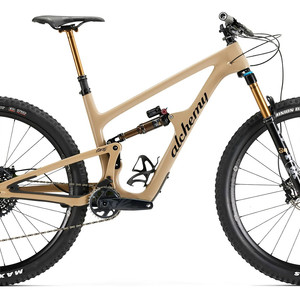
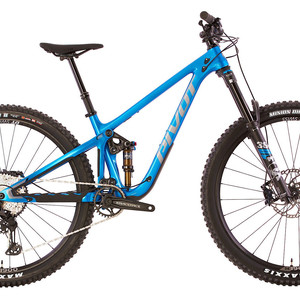
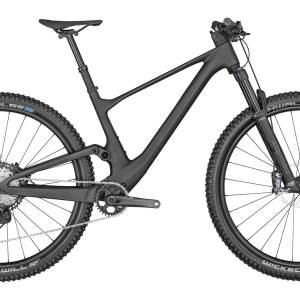
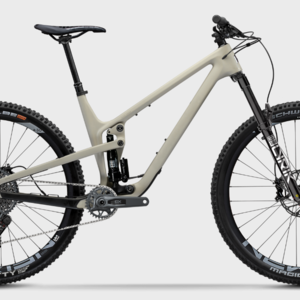

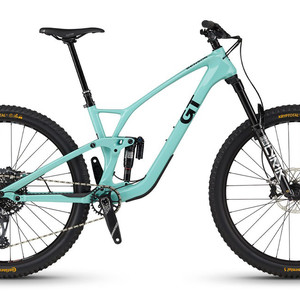






5 comments
Post a reply to: 2013 Test Sessions: Pivot Mach 5.7 Carbon